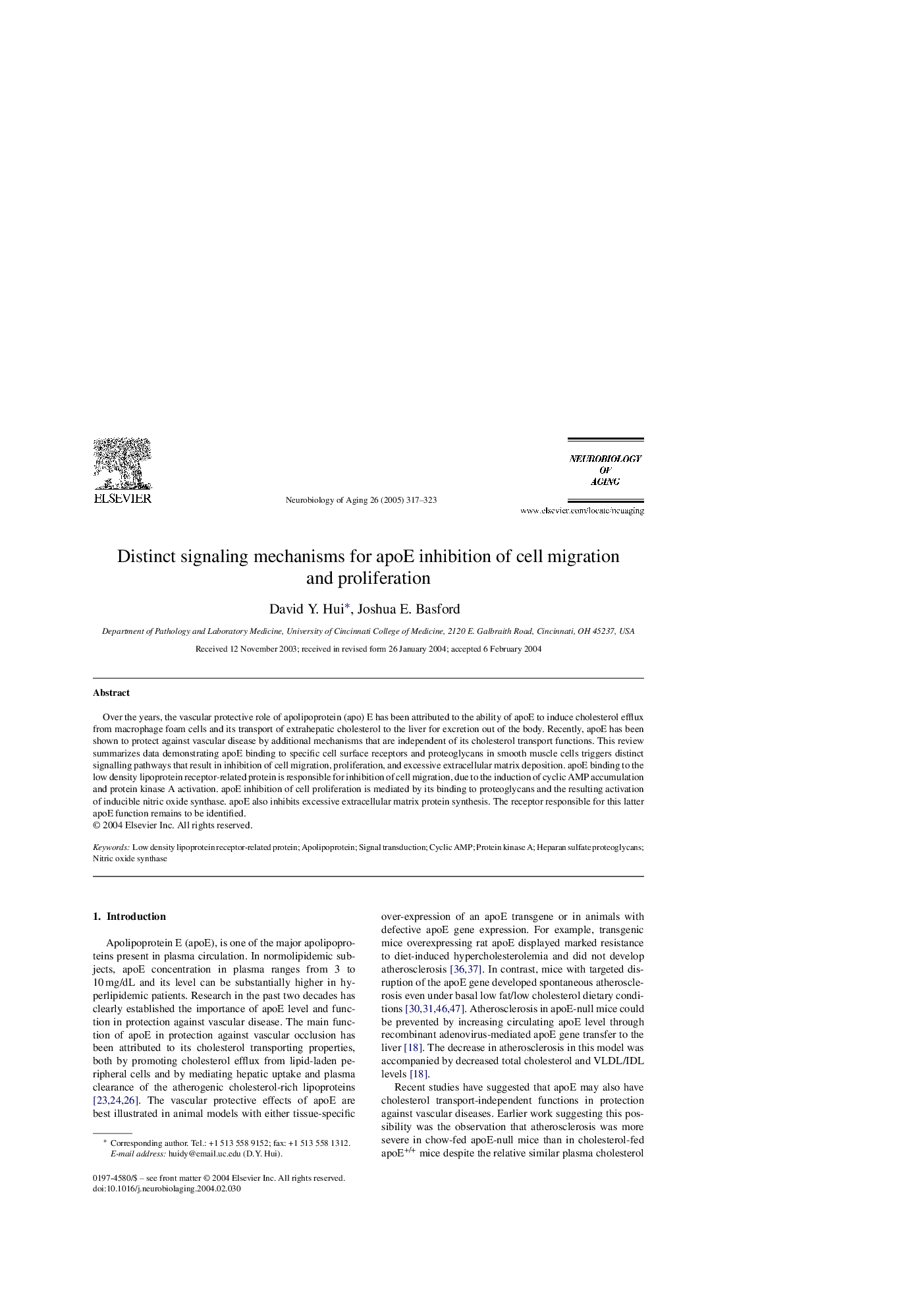| Article ID | Journal | Published Year | Pages | File Type |
|---|---|---|---|---|
| 9645144 | Neurobiology of Aging | 2005 | 7 Pages |
Abstract
Over the years, the vascular protective role of apolipoprotein (apo) E has been attributed to the ability of apoE to induce cholesterol efflux from macrophage foam cells and its transport of extrahepatic cholesterol to the liver for excretion out of the body. Recently, apoE has been shown to protect against vascular disease by additional mechanisms that are independent of its cholesterol transport functions. This review summarizes data demonstrating apoE binding to specific cell surface receptors and proteoglycans in smooth muscle cells triggers distinct signalling pathways that result in inhibition of cell migration, proliferation, and excessive extracellular matrix deposition. apoE binding to the low density lipoprotein receptor-related protein is responsible for inhibition of cell migration, due to the induction of cyclic AMP accumulation and protein kinase A activation. apoE inhibition of cell proliferation is mediated by its binding to proteoglycans and the resulting activation of inducible nitric oxide synthase. apoE also inhibits excessive extracellular matrix protein synthesis. The receptor responsible for this latter apoE function remains to be identified.
Keywords
Related Topics
Life Sciences
Biochemistry, Genetics and Molecular Biology
Ageing
Authors
David Y. Hui, Joshua E. Basford,
